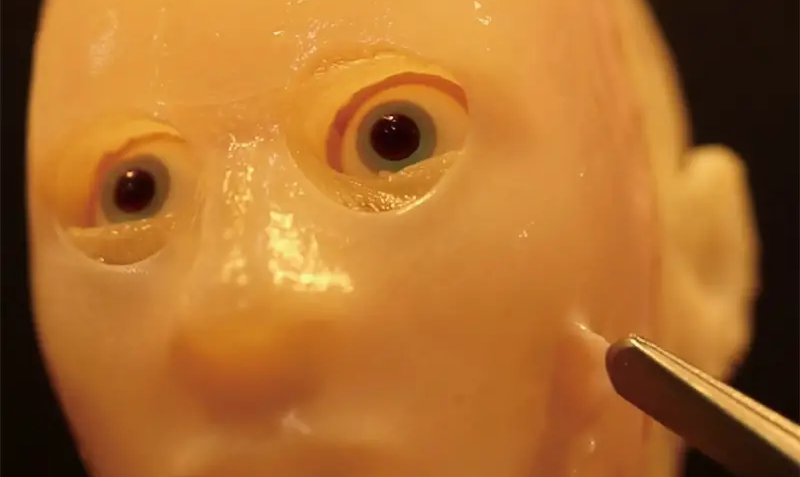A digital twin is an exciting technology that allows us to explore a wide range of possibilities and get a better understanding of complex real-world systems. This virtual representation of physical entities and processes is composed of three main components: the physical entity in real space, the digital twin in software form, and finally, data that links these two elements together. Digital twins are already being used both to reduce costs and increase efficiency in many industries, and their potential for improving our abilities even further is increasingly becoming clear.
This article was written by Alex MacFarland and originally published by Unite.AI.
A digital twin enables organizations to unlock unprecedented insight into the performance of their physical objects. By installing various data-producing sensors onto the object and relaying that information to a processing system, the virtual copy can be improved continuously as real-time data is uploaded and analyzed. This ability to generate insights provides an effective solution for organizations seeking improvement in areas such as energy output and temperature regulation.
Underlying this is an efficient approach which uses simulations and studies of performance issues to inform these improvements before they are actually implemented on the original object, greatly reducing costs and time effort associated with making these transformations.
Difference Between Digital Twins and Simulations
Digital twins and simulations are both powerful tools in studying the complexities of a system. While they both utilize digital models to study and replicate the system’s functions, the key difference lies in the scale: simulations typically focus on one process whereas digital twins can be used to run multiple simulations for a more holistic view of its intricate operations.
Digital twins are much more than a static model — they offer an interactive environment that provides a far richer information set for analysis. By utilizing this virtual space, users can more accurately assess how their systems will function under different scenarios, providing invaluable insight that often allows businesses to make better informed decisions.
The differences between simulations and digital twins extend even beyond this context. Simulations lack the real-time feedback data to measure accuracy, whereas a digital twin is set up to communicate bi-directionally, by taking in data from the object sensors and then sharing the insights it forms back with that same source. This structure enabled by digital twins helps generate more accurate models and responses, allowing users access to instant actionable intelligence.
Digital twins are proving to be revolutionizing the way organizations can simulate and plan for potential real-world outcomes. By harnessing virtual environments and the enhanced computing power available, plus having access to more up-to-date data collected from a wide range of areas, digital twins are able to assess issues from a broader spectrum of points than traditional simulations can offer. This improved capability presents practically limitless potential to enhance products, plans and processes in substantial ways.
Digital twins are revolutionizing the way organizations can simulate and plan for potential real-world outcomes. By harnessing virtual environments and the enhanced computing power available, plus having access to more up-to-date data collected from a wide range of areas, digital twins are able to assess issues from a broader spectrum of points than traditional simulations can offer. This improved capability presents practically limitless potential to enhance products, plans and processes in substantial ways.
Types of Digital Twins
There are various ways to categorize digital twins, but some of the most common types and methods include:
Component Twins
Component twins are digital replicas of an individual part in a system or product, providing options for ensuring durability in real-life application. Through these digital models, designers and engineers can simulate dynamic scenarios that individual parts may encounter during use.
This practice allows them to assess the part’s integrity and make necessary improvements to guarantee its dependability. Simulated scenarios could represent various levels of stress and heat that the part may experience, allowing designers to tweak its specs appropriately. With component twins, it is possible to identify possible weaknesses before they even exist in reality.
Asset Twins
Asset twins, or product twins, provide a unique way to visualize the operation of physical products and their various components. By offering virtual incarnations of real-world products, asset twins enable experts in numerous fields such as engineering and maintenance to gain insight into how systems work together.
For instance, asset twins can be effectively utilized to monitor the performance of a wind turbine and identify which components are most prone to failure due to regular wear-and-tear. In this way, asset twins might prove invaluable for assessing the health of machines across a variety of different industries.
System Twins
System twins, also known as unit twins, provide a virtual representation of systems made up of many interrelated products. By modeling individual products and their interactions as part of a complex system, it’s possible to identify opportunities for increased efficiency and productivity. System twins act as a lens through which organizations can gain insights into the relationship between products and customer demand, allowing them to optimize processes for maximum performance.
With this added visibility into operations, businesses are able to take a more proactive approach to problem-solving and ensure that all components are working in harmony with one another. This powerful technology offers businesses an exciting opportunity to increase efficiency by understanding how their assets interact and improve upon the current system.
Process Twins
The concept of process twins provides an exciting new perspective on digital solutions for business owners and decision makers. With a process twin, every level of operations can be modelled, from large-scale systems to small details. This allows businesses to gain predictive insight into potential issues, develop recommendations and action plans based on current patterns or envisioned scenarios, and optimize production models to ensure maximum efficiency.
Process twins are pioneering a new revolution in how we look at the modern interconnected system in industries like manufacturing and help foster agility within organizations as they strive to remain competitive in the ever-evolving market.
Benefits of Digital Twins
Digital twins offer an array of benefits, such as reducing the cost and risk of working on the physical aspects.
Some of the other main benefits of digital twins include:
Greater Efficiency
Digital twins can alleviate headaches associated with post-production real-world manufacturing processes by allowing automated monitoring of the entire multi-part system. By using digital models to mirror physical production systems, manufacturers can be more proactive in ensuring peak performance and efficiency during all steps of the process.
Digital twins offer a level of transparency and flexibility that manual processes simply cannot match. With the ability to quickly assess minor fluctuations or unintended consequences on machine operations, executives can make informed decisions to gain continuous improvement in their organization’s performance. All of this puts digital twins in an ideal position to serve as powerful instruments for modern manufacturers striving for optimal yield and energy conservation.
Better R&D
The use of digital twins to inform research and design decisions has become increasingly popular due to its ability to generate comprehensive data and reports around the likely performance outcomes of products.
This abundance of data grants incredible insight and allows companies to make informed decisions on potential product refinements without beginning the expensive production process. With digital twins, companies can have a crystal-clear idea of how their product will perform in various scenarios or applications before investing in large-scale manufacturing. This not only helps save money and resources, but also ensures that customers receive products of a higher quality as companies emphasize refinement rather than trial-and-error.
End-of-Life Products
Digital twins are a valuable tool for manufacturers to efficiently and effectively manage the product lifecycle. They can use this information to optimize the final steps within product processing, giving them cost savings and ensuring regulatory compliance. Digital twins enable manufacturers to analyze material compositions and gain insights about what can be harvested from products at end-of-life stages, meaning they can decide how and when to recycle or repurpose materials.
This knowledge has the potential to have a positive and long-lasting impact in helping them cut costs, reduce their carbon footprint, as well as drive new methodologies for sustainability initiatives
Other Benefits
Some of the other benefits of digital twins include improved operational efficiency, longer uptime for equipment, increased reliability and availability through monitoring and simulation, lower maintenance costs, and continued improvements.
Digital Twin Use Cases
The industries that rely on digital twins the most include:
- Manufacturing: The industrial sector is at the forefront of leveraging digital twins, and there has been extensive implementation seen in this area. For many years now, manufacturers have used virtual replicas to model components, products, systems and entire factories – allowing them unprecedented insights into their operational processes.
- Healthcare: Through digital twins, medical professionals are empowered to optimize diagnoses and treatments while avoiding the risks of real-world testing. By leveraging electronic health records, genome sequencing data, imaging results and other patient information alongside anonymized comparative research insights – providers can confidently determine the best therapy options for their patients with greater accuracy than ever before
- Energy: Electric companies are on the cutting-edge of technology, exploring digital twins to revolutionize power plants, grids and even renewable energy systems. This innovative approach could enable unprecedented control over maintenance protocols and production monitoring in order to maximize efficiency for solar installations and wind farms – a critical step towards carbon neutrality. In the future, entire electric grid networks may be replicated with process digital twins.
- Urban Planning: Through the technology of digital twins, cities and large construction projects can be digitally connected to improve infrastructure. Utilizing IoT techonologies along with AI analytics make it possible for smart city initiatives to increase energy-efficiency while optimizing transportation services on a national scale.
- Retail and E-Commerce: Retailers are leveraging digital twins to transform the shopping experience, from product placement and customer journey optimization in physical stores, to pushing online engagement through virtual store models. The innovation is also revolutionizing visuals with 3D images rendered in unprecedented detail – creating a hyper-realistic viewing experience.





